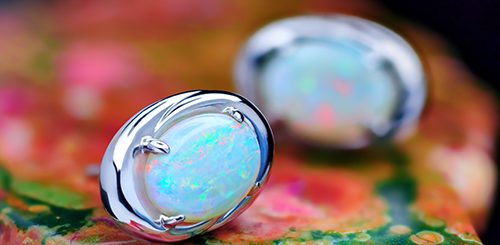How To Shop For Opal Jewelry

Opal is essentially silica in a form that is amorphous and hydrated. When deposited it will occur at temperatures which are relatively low, and has become prized for its rarity and beauty. It is the official Australian gemstone and is extensively mined in that country. Below is a guide for those who are buying it for the first time.
Forms Of Opal
Opal comes in many different forms, patterns and color. For instance, boulder opals are typically found in deposits containing ironstone which gives them a backing which is extremely hard. When cut the ironstone will remain in back which results in a strong foundation which adds to its look. Although boulder opal is more affordable than black opal, the color they display is brilliant.
Opal experts will tell you that Black Opal is the king of the hill when it comes to rarity, cost and demand. As the name suggests they display a dark tone which may consist of multiple colors. White opals, unlike their black counterparts, are fairly common. They don’t reflect color very well and as such carry a lower valued when compared to black opal. However, when worn with the right outfit white opal can be absolutely stunning. The final form is crystal opal, which are named after their quasi transparent and crystalline appearance. This effect may be found in multiple opal stones and depending on the color they can carry a high value.
Choosing The Right Opal
Opal is distinct from diamonds, sapphires and rubies in that it does not currently have a standard process of valuation. However, the pattern, color, class, brilliance, thickness and tone are all factors that can be taken into consideration to select the right one. Opal can reflect color from multiple angles, and the color range will play a key role in its value.
For instance, the most expensive opals will have a color play which extends across the entire surface, encompassing numerous angles. Less expensive opals will not display extensive color play, but will instead have a pattern which is unique. One also has to consider the level of hue and light that the stone reflects. Higher end opals will display brilliant color flashes, while their lower end counterparts will display a color which is more subdued. On a scale of 1 to 5, opals range from faint to brilliant.
Body tone is a reference to the background darkness and lightness of the stone. The best way to determine the body tone of opal is by viewing it from up front. The body tone scale will extend from N1 up to N9, where N1 is darkest while N9 is brightness. Black and White opals have their own specific body tones which differ from one another. As with other stones such as diamonds, opals are subject to flaws which include cracks or inclusions, and the fewer faults the opal has, the more valuable it will be.


